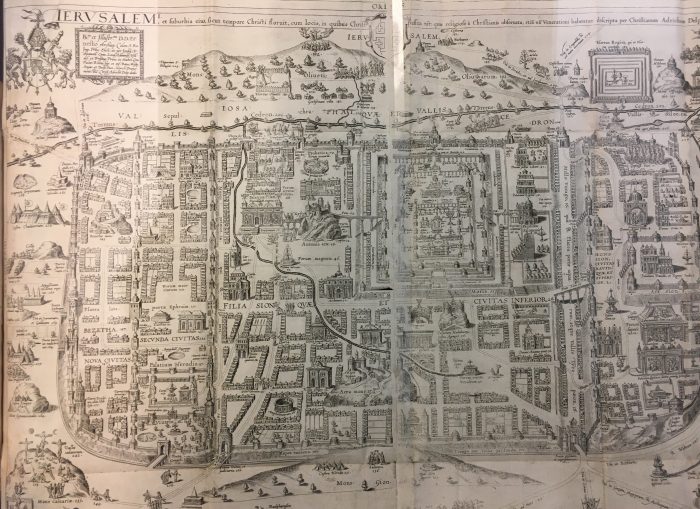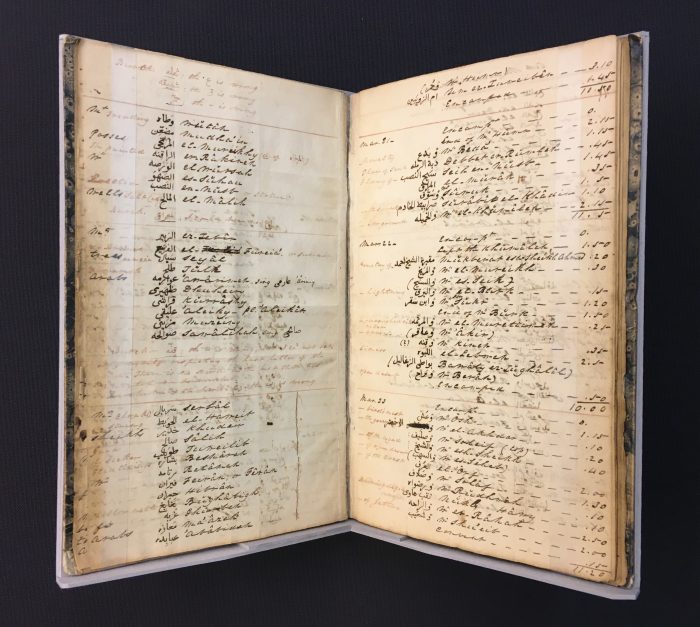Visitors at the Burke Library may have noticed our new exhibit, Mapping the Holy Land, which showcases two items from our special collections—one from the rare book collection, one from the archives—to highlight how scholars of the past have thought about, and visualized, one of the most historic and contentious areas of our world.
The two items represent different time periods, different methods of “mapping,” and two different parts of The Burke’s special collections. The first is a rare book only recently purchased by the library: the first edition of Christiaan van Adrichem’s Theatrum Terrae Sanctae et biblicarum historiarum (“The Theater of the Holy Land and Biblical History”). Published in 1590, in the German city of Cologne, Adrichem’s magnificent folio volume represented a major attempt to chart both the physical geography of the Holy Land and also important events that shaped the religious history of the region. Complete with fold-out maps (one of which is on display!), this work utilized contemporary sources now lost to us to provide readers with descriptions, illustrations, and maps of a wide variety of important religious sites and areas. It is a beautiful book, simultaneously a work of biblical history, archaeology, urban planning, and travel narrative.

The second work in this exhibit is a travel notebook from 1837-1838. It comes from the Burke’s archival collections, specifically the Edward Robinson Papers. Edward Robinson (1794-1863) was a prominent American biblical scholar who arrived at Union Theological Seminary in 1837 as one of the school’s first professors of biblical literature. That same year, he journeyed to the Holy Land to research prominent sites mentioned in the Bible—research that would become the basis for his landmark Biblical Researches in Palestine, published in 1841. Robinson’s notebook records his itinerary through the Holy Land, as he tried to locate and document biblical sites using contemporary archaeological information. The (excellent) Arabic script that we see in this notebook further shows how thoroughly Robinson embraced local culture and traditions as he made his way around the Holy Land.

Adrichem’s Theatrum Terrae Sanctae and Robinson’s travel notebook represent only a small sample of the rich material about the Holy Land that The Burke has in its collections. They inspire us to reflect on our own travels, and on how we document spatial and historical distances, visually and in written language. From archival materials to rare books to photographs, The Burke has a remarkable collection of visually appealing materials that allow us to see and understand how past scholars and past eras viewed what is still one of the most interesting and dynamic areas of the world. This new exhibit, Mapping the Holy Land, is just a small window to a much larger world. Please have a look when you pass through the library!